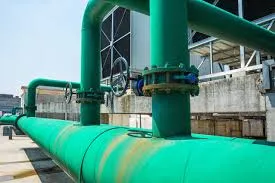
-
 Afrikaans
Afrikaans -
 Albanian
Albanian -
 Amharic
Amharic -
 Arabic
Arabic -
 Armenian
Armenian -
 Azerbaijani
Azerbaijani -
 Basque
Basque -
 Belarusian
Belarusian -
 Bengali
Bengali -
 Bosnian
Bosnian -
 Bulgarian
Bulgarian -
 Catalan
Catalan -
 Cebuano
Cebuano -
 China
China -
 China (Taiwan)
China (Taiwan) -
 Corsican
Corsican -
 Croatian
Croatian -
 Czech
Czech -
 Danish
Danish -
 Dutch
Dutch -
 English
English -
 Esperanto
Esperanto -
 Estonian
Estonian -
 Finnish
Finnish -
 French
French -
 Frisian
Frisian -
 Galician
Galician -
 Georgian
Georgian -
 German
German -
 Greek
Greek -
 Gujarati
Gujarati -
 Haitian Creole
Haitian Creole -
 hausa
hausa -
 hawaiian
hawaiian -
 Hebrew
Hebrew -
 Hindi
Hindi -
 Miao
Miao -
 Hungarian
Hungarian -
 Icelandic
Icelandic -
 igbo
igbo -
 Indonesian
Indonesian -
 irish
irish -
 Italian
Italian -
 Japanese
Japanese -
 Javanese
Javanese -
 Kannada
Kannada -
 kazakh
kazakh -
 Khmer
Khmer -
 Rwandese
Rwandese -
 Korean
Korean -
 Kurdish
Kurdish -
 Kyrgyz
Kyrgyz -
 Lao
Lao -
 Latin
Latin -
 Latvian
Latvian -
 Lithuanian
Lithuanian -
 Luxembourgish
Luxembourgish -
 Macedonian
Macedonian -
 Malgashi
Malgashi -
 Malay
Malay -
 Malayalam
Malayalam -
 Maltese
Maltese -
 Maori
Maori -
 Marathi
Marathi -
 Mongolian
Mongolian -
 Myanmar
Myanmar -
 Nepali
Nepali -
 Norwegian
Norwegian -
 Norwegian
Norwegian -
 Occitan
Occitan -
 Pashto
Pashto -
 Persian
Persian -
 Polish
Polish -
 Portuguese
Portuguese -
 Punjabi
Punjabi -
 Romanian
Romanian -
 Russian
Russian -
 Samoan
Samoan -
 Scottish Gaelic
Scottish Gaelic -
 Serbian
Serbian -
 Sesotho
Sesotho -
 Shona
Shona -
 Sindhi
Sindhi -
 Sinhala
Sinhala -
 Slovak
Slovak -
 Slovenian
Slovenian -
 Somali
Somali -
 Spanish
Spanish -
 Sundanese
Sundanese -
 Swahili
Swahili -
 Swedish
Swedish -
 Tagalog
Tagalog -
 Tajik
Tajik -
 Tamil
Tamil -
 Tatar
Tatar -
 Telugu
Telugu -
 Thai
Thai -
 Turkish
Turkish -
 Turkmen
Turkmen -
 Ukrainian
Ukrainian -
 Urdu
Urdu -
 Uighur
Uighur -
 Uzbek
Uzbek -
 Vietnamese
Vietnamese -
 Welsh
Welsh -
 Bantu
Bantu -
 Yiddish
Yiddish -
 Yoruba
Yoruba -
 Zulu
Zulu
Exploring Effective Solutions for Corrosion Prevention and Management in Various Industries
Corrosion Solutions Understanding and Preventing Material Degradation
Corrosion is a natural process that leads to the deterioration of materials, primarily metals, through electrochemical reactions with their environment. It is a significant concern across various industries, including construction, automotive, and manufacturing, as it can lead to structural failures, increased maintenance costs, and safety hazards. Understanding corrosion and its mechanisms is essential for developing effective solutions to mitigate its effects.
Corrosion occurs when metals react with environmental factors such as moisture, oxygen, salts, and pollutants. Common forms of corrosion include uniform corrosion, pitting, galvanic corrosion, and crevice corrosion. Each type of corrosion has distinct characteristics and requires specific prevention and control strategies.
Corrosion Solutions Understanding and Preventing Material Degradation
Another common approach is cathodic protection, which involves making the metal structure a cathode in an electrochemical cell. This technique can be implemented using sacrificial anodes or impressed current systems. Sacrificial anodes are made from a more reactive metal that corrode preferentially, thereby protecting the underlying metal. Impressed current systems involve applying an external current to counteract the electrochemical processes that lead to corrosion.
corrosion solution

Material selection is crucial in corrosion prevention. Engineers and designers must consider environmental factors when choosing materials for specific applications. For example, stainless steel, which contains chromium, offers enhanced resistance to corrosion compared to plain carbon steel. Similarly, alloys such as nickel-copper and titanium demonstrate excellent corrosion resistance in marine environments. By selecting materials that are naturally resistant to corrosion, the potential for degradation can be minimized.
Regular maintenance and inspections are essential components of any corrosion management strategy. Routine checks can identify early signs of corrosion, allowing for timely repairs or replacements. Implementing a comprehensive maintenance program helps ensure that structures remain safe and functional over their intended lifespan.
Corrosion inhibitors are another solution to mitigate corrosion. These chemicals, when added to the environment or applied directly to the metal surface, reduce the rate of corrosion by altering the electrochemical reactions. Common inhibitors include phosphates, amines, and nitrites, which can be particularly effective in industrial applications, such as cooling water systems and oil pipelines.
Moreover, advances in technology are paving the way for innovative solutions to combat corrosion. The use of smart coatings that provide real-time monitoring and feedback on corrosion status represents a significant leap forward. These coatings can change color or provide alerts when corrosion is detected, enabling proactive measures to be taken before significant damage occurs.
In conclusion, corrosion is a pervasive issue that affects a wide range of industries and structures. However, understanding its mechanisms and implementing effective prevention and management strategies can significantly reduce its impact. From protective coatings and cathodic protection to strategic material selection and regular maintenance, numerous solutions are available to combat corrosion. As technology continues to advance, the future holds promising developments that may further enhance our ability to protect materials from degradation. By prioritizing corrosion management, industries can ensure safety, reduce costs, and extend the longevity of their structures and equipment.









